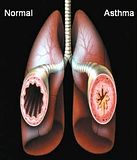Why There is NOTHING Wrong With the Dreaded Knee Extension Exercise
Background:
As far back as I can remember through undergrad and PT school it has been driven through my head that the seated knee extension exercise is among the very worst exercises that anyone can do for knee health. Engaging in this exercise is sure to grind down the back side of your patella like a block of cheddar across a cheese grater. And don’t you dare even think about loading someone’s distal tibia after an ACL reconstruction! Over and over again I’ve sat by and listened (and even been the promoter) to the arguments about how it’s not “functional” because it doesn’t mimic daily life and that you “never load the body in this manner during any task so it’s suboptimal”. Yet, I haven’t ever been shown any appreciable evidence on how “bad” this exercise is other than a couple of studies that have looked at the retro-patellar forces as well as consistent ACL loading throughout the full range during the seated knee extension. We seem to be extraordinarily quick to jump on the band wagon that throws good and bad labels on all sorts of movements with extremely weak evidence and just a hypothesis.
I’ll agree that on the surface that sounds really scary. Knee extensions have more compressive forces on the patellofemoral joint and load the ACL more than a squat at certain degrees of knee flexion (0-30), yet what we are failing to realize is that these forces are far below those necessary to cause damage to the tissues. Conversely, squats load the patellofemoral joint greater between 60-90 degrees than the seated knee extension. I guess we should all just do partial 90-30 seated knee extensions and mini squats to 30 degrees for the rest of our lives? Or NOT! It’s indisputable to argue against the fact that our bodies were designed to undertake high stress loads, and actually improve in efficiency, tissue quality, and capacity under structured loading. This is the entire premise of the tissue homeostasis model and foundational laws of biology such as Wolff and Davis’ laws. Yet, every time an exercise shows “higher loading forces” we tend to demonize it.
We’ve been down this path before:
It wasn’t long ago that the majority of the medical and rehab community touted how bad squats were for your knees. However, now any self-respecting rehab professional will not hesitate to load up a squat and even try to push a little ass to grass action if the client has no contra-indications. Similarly, we have spent years telling people that running is bad for their knees as well. Yet, the research continues to mount that running is not bad for your knees, and in fact could be protective for knee health and function later in life (see here, here, and here)
Sure, it would seem that repetitively pounding on the knees while putting in thousands of miles running through one’s lifetime would logically lead to a progressive breakdown in tissue. However, this would only be logical if humans were built like cars with a finite amount of tire revolutions and oil filters that wear out. Unlike cars, humans have the amazing ability to adapt to stress and actually become stronger due to it. Adam Meakins has written a nice article here on how we are nothing like cars that is worth a read. So if we have wrongly demonized running, squatting, shoulder press, dead lifts, and many more just to find out that they are totally fine in the end why would it be any different with the seated knee extension?
Getting back to the seated knee extension:
So is the knee extension really as bad as you’ve been told? Well maybe not if you look at the research and see how truly important quadriceps strength is for healthy knees, recovery from ACLR, improvement in symptoms in PFPS, and even just plain old physical function in the elderly. Dennis Treubig did a phenomenal job here at beating me to writing about this topic in relation to ACL reconstruction. So instead of boring you with a ton of research breakdown I will kindly just post his summary of the research along with some additional research related to function and PFPS below.
- · Quad strength was a good predictor of function & performance on hop tests. More specifically, patients with <85% quad strength demonstrated decreased function and poor performance on hop tests. Important to note, these findings were the same regardless of graft type, presence of meniscal injury, and knee pain/symptoms (Schmitt LC 2012).
- Physical function at the time of return to sport following ACLR was largely influenced by the recovery of quadriceps strength (Lepley LK 2015)
- Greater than 80% quad strength after ACLR is associated with less severe patellar cartilage damage at short-term follow-up (Wang HG 2015).
- ACLR patients with weaker quads showed more asymmetry in their landing mechanics (Schmitt LC 2015).
To show how important quad strength is in relation to PFPS:
·
- Decreased torque, total volume, and CSA of the quadriceps muscle are presented in unilateral with PFPS (Kaya D 2011)
- · Weight-training exercise focusing on quadriceps strength increased the patellofemoral joint contact area, which could reduce mechanical stress in the joint, improving pain and function in subjects with PFPS. (Chiu JK 2012)
- · The most effective and strongly supported treatment modality for patients with PFPS is a combined physiotherapy program, including strength training of the quadriceps and hip abductors and stretching of the quadriceps muscle group. (Rixe JA 2013)
To show how important quad strength is with regards to functional outcomes:
- · High-resistance weight training (using only a seated knee extension machine) leads to significant gains in muscle strength, size, and functional mobility among frail residents of nursing homes up to 96 years of age. (Fiatorone MA 1990)
- · Quad strength is a major determinant of both performance-based and self-reported physical function in patients with knee osteoarthritis (Maly MR 2006).
- · After total knee arthroplasty (TKA), quadriceps strength was the most highly correlated impairment with functional performance (Mizner RL 2005).
So what exactly does all this research tell us? Decreased quad strength is a great predictor for decreased function after ACL reconstruction, correlates strongly with PFPS, and also correlates very well with poor function in the elderly.
The case for implementing the seated knee extension:
Now I know you are thinking “well that’s great that we know quad strength is so important, but can’t we just do squats and lunges to strengthen the quads? They are more functional anyway” Well… Yes, squats, lunge variations, and step up exercises can most definitely help strengthen the quad. However, some patients don’t seem to respond well to them at certain points in rehab and some may never regain full quad strength with these exercises alone. One way we can very easily see this if we look back to all the research presented by by Dennis Treubig related to ACLR and the prevalence of quad weakness after ACLR.
Additionally, we know from mounting research that using a variety of exercises for a muscle group is more effective than any one single exercise even when in a volume matched program. Therefore, the addition of a completely different open chain exercise may help to stimulate further growth to the quadriceps. Furthermore, IF we want to put any extra importance on the almighty VMO a novel way of looking at knee extension can be seen when we look at the firing pattern. We can see here that the VMO is the last to fire in an open chain knee extension vs the much more unison firing in closed chain exercises such as squatting and lunges. In the seated knee extension the VMO appears to fully activate towards the terminal knee extension. The same point in which maximum load is being transferred to the quadriceps due to the full lengthening of the lever arm. Conversely, in a squat or lunge the load is transferred off of the quadriceps and to passive structures when the knee reaches terminal extension due to the screw home mechanism, bony approximation, and ligamentous tightening. It is POSSIBLE that this could lead to a unique loading stimulus to the quadriceps that closed chain exercises can’t generate.
Please don’t hear what I’m not saying! I AM NOT saying that you should not be using closed chain exercises such as squats, lunges, deadlifts, and step ups. If you have read any of my other writing you would know that I am a big fan of taking good old fashioned movements like these and loading them up. I am only saying that additional loading variations to isolate the quadriceps such as knee extensions should be considered are ARE NOT likely to be dangerous to the knee in any way barring any significant retro-patellar tissue damage or unnecessarily forcing a patient/client to continue to press through significant pain. Clinically, we also often see patients that have significant pain with closed chain loading and my need to start with open chain to improve neuro-motor control of the quadriceps. Do some patients have pain with open chain and no pain with closed chain exercises? Absolutely, and they likely are not the prime candidate for seated knee extensions at that point in their rehab.
At the end of the day there is no good evidence to show that the seated knee extension is the demon of knee health, and in fact using foundational principles we can make a pretty solid argument for including it into a well-rounded and comprehensive rehab or strength training program.
As usual, thank you for reading.
Jarod Hall, PT, DPT, CSCS







0 Response to "Why There is NOTHING Wrong With the Dreaded Knee Extension Exercise"
Posting Komentar